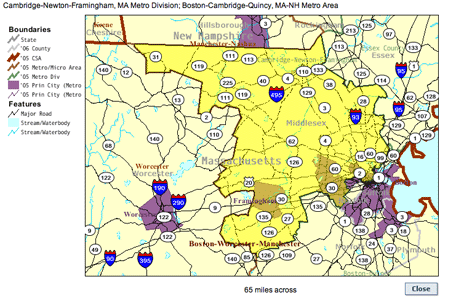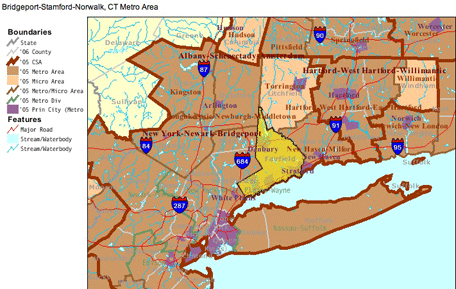All we want around here at The Audit—all we’ve ever wanted—is a few smart neighbors. We are just so sick and tired of the dopes hanging around the Columbia campus, especially in the Journalism Building. Talk about stupid! Cripes.
That’s why we were psyched—pumped!—when we saw Forbes.com’s recent ranking of the twenty-five “Smartest Cities” in America. Finally!
As the story says:
Some people are drawn to settling in or traveling to a particular locale because of its eternally warm weather, others find themselves moving around due to family matters or work-related necessities. But what if you’re looking to surround yourself with academic excellence in a haven for intellectual stimulation and scholarly achievement? In that case, it’s not the sun you’re pursuing but the smarts.
That’s us. IntelleckCHUal stim-u-LAY-shun!
Printing out the list, we packed our abacuses (abaci?) and slide rules and piled into the gleaming Audit-Mobile, speeding up I-95 until we arrived in the nearest smart city we could find:
Bridgeport!
Hey, don’t get us wrong. We like Bridgeport just fine. But is that really the “smartest” city in the New York area? And since when do a million people live there?
The business press likes lists. We don’t know why. But it does. List-making seems more a clerical than journalistic function, but that’s just us.
But this one is at the bottom of our list of lists.
It’s not just the equation of intelligence with percentage of residents who have a bachelor’s degree, or the unsurprising fact that much of the list consists of—get this—college towns. We are talking here about torturing statistics. It is only through such waterboarding that “Cambridge” becomes a place that includes Framingham, but not Boston, and “San Francisco” means places over the Golden Gate Bridge but not the Bay Bridge.
As it turns out, none of these “smart cities” are cities at all. Forbes.com is applying the shorthand “city” to two Census Bureau categories, one more problematic than the other.
“Bridgeport,” for instance, is actually a Metropolitan Statistical Area, a widely known geographic designation that is often—but not always—useful for the general reader. Even more problematic is Forbes.com’s use of a new and justly obscure subset of the MSA known as a Metropolitan Division, which is fine for the Census Bureau, but as we’ll see, isn’t really a “city.”
Spawned by the 2000 Census, a Metropolitan Division, or MD, strings together several real-life cities into a “city” that no one would recognize as such, rendering any rankings useless and in some cases just weird.
So now a chunk to the north and west of Boston —called the Cambridge-Newton-Framingham Metropolitan Division— is one of the most educated “cities” in the country:

Framingham. Cambridge. So not the same thing.
And we have Washington, D.C., an MSA split into two MDs, each of which makes the list separately. So, according to the Forbes.com list, Bethesda-Gaithersburg-Frederick and a few other towns are a single place, and the nation’s second-smartest city at that. Washington, D.C., and Arlington and Alexandria, Virginia, are another place, ranking a relatively stupid thirteenth. (Forbes.com puts Alexandria in Maryland, and we have to agree: Who cares?)
And here is San Francisco as you have never seen it before: a gerrymander reaching around the west side of the bay—what the Census calls the San Francisco-San Mateo-Redwood City Metropolitan Division. What’s left out, as anyone familiar with San Francisco would realize, is Oakland and its environs. Or, in statistical terms, the Oakland-Fremont-Hayward Metropolitan Division. Together, these two divisions make up the San Francisco MSA, but the dumb one is dropped off:

San Francisco, by the way, is smart, but not as smart as “San Francisco.”
Forbes.com lists the San Francisco-San Mateo-Redwood City MD as having 43.12 percent of its residents with at least a bachelor’s degree. According to Bert Sperling’s BestPlaces, the source for the Forbes.com data, the entire San Francisco-Oakland-Fremont MSA has just over 38 percent with at least a bachelor’s. The whole metro area would still have made the Forbes.com list of twenty-five, but it would have dropped out of the top ten and moved closer to the end.
This is where we begin to question the whole list-making enterprise. What’s the point of all this manipulation?
The Forbes.com piece touched off a mini-tempest online with a few readers protesting that “Bridgeport” was not the Bridgeport they had come to know.
What a joke! I don’t know about the other “smart” cities, but I know Bridgeport, CT, intimately.
The reader went on to quote the city’s high poverty stats and low median household income, then drew the conclusion that:
Your reporter has added all those well-educated and highly paid people who live in Greenwich, Darien, New Canaan, Westport, Fairfield, etc.
Pretty good guess, actually:

And the reader’s response?
This article makes me think twice whether or not to believe those Forbes “10 best…”, “100 worst…” etc. lists. I am disgusted!
Egads! Surely not the Forbes 400!
When we asked Forbes.com Executive Editor David Andelman how Bridgeport got so smart, he explained to us in an e-mail that the piece indeed used MDs and MSAs, identified by the first city in the Census Bureau’s official name. That’s how the Bridgeport-Stamford-Norwalk Metropolitan Statistical Area became “Bridgeport” with a population of more than 900,000. The real city has about 135,000 people.
He said Forbes.com added the full names to clear up any confusion.
In terms of the MDs or MSAs with multiple names, we have gone and added the full name (e.g. Cambridge-Newton-Framingham) rather than simply the shorthand name we [had] used, e.g. Cambridge…
He also told us that Forbes.com used MDs when available (not all MSAs have MDs) because, “In each case, they are the smallest subdivision kept by the Census Bureau.”
Actually, the Census Bureau keeps data on smaller entities. They’re called “cities.”
But listen, we like MSAs, and Forbes.com uses them for twenty of its top twenty-five cities. They’re mostly fine for this kind thing. We think, however, MDs are a lame excuse for “cities,” and should not be used. And why mix different categories, MSAs and MDs, and call them both “cities,” which neither is? And are Framingham and Cambridge really the same place?
When we asked Andelman for further clarification, he responded in an e-mail saying that beyond what he had already told us, “We feel the story and related slideshow as they appear on Forbes.com speak for themselves, and we don’t have anything further to
add.”
In an interview, Bert Sperling, who runs the site that provided data to Forbes.com, said that using Metropolitan Divisions made sense because they offered a narrower slice of an MSA. He also cautioned us against too rigorous an analysis of Forbes’s lists, which are often, as he carefully put it, “quirky” and “lighthearted in analysis.”
But even MSAs can be a problem. Take Raleigh and Durham. Forbes.com treats the two separately even though they are virtually on top of each other. Indeed, they were until they became quite recently part of the same Census-defined MSA—until, that is, the House Office of Management and Budget changed many of its statistical definitions after the 2000 Census.
Still, we always thought Raleigh (nineteenth) was stupider than Durham (fourteenth), and now we know it’s true.
Then there’s the problem of false precision, a hallmark of the business press. “Bridgeport,” at 39.33 percent, is a tenth of point smarter than the San Jose-Sunnyvale-Santa Clara MSA, at 39.23 percent. What’s the difference? A couple of comp-lit grads in Fairfield? Other entries have differences almost as small and are inside the margin of error. As long as we’re playing statistician, there’s no statistical difference between the two, um, cities.
The OMB warns against using these definitions for anything other than statistical purposes. In a 2005 bulletin, the OMB stated that these statistical areas “are not intended to serve as a general-purpose geographic framework for nonstatistical activities.” It also says:
It is generally not appropriate to rank or directly
compare Metropolitan Divisions with Metropolitan and Micropolitan
Statistical Areas.
But did Forbes.com listen? No, it did not.
Finally, we feel bad that our hometown, New York, didn’t make the list at all.
With offices on Fifth Avenue, Forbes is not helping.
Elinore Longobardi is a Fellow and staff writer of The Audit, the business-press section of Columbia Journalism Review.
